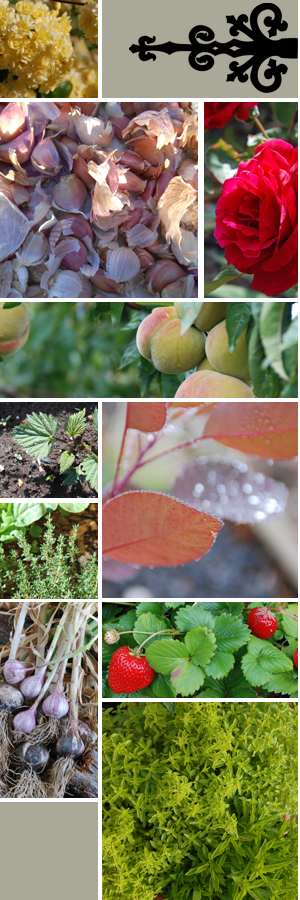
Growing a Heritage Food Garden
When we purchased Schouten House in 2006, our single greatest regret was the fact that all of the original outbuildings, and any signs of gardens, were long lost under neighbouring houses built on the original '4 acres, gardens and extensive stabling' advertised in a 1906 notice to let.
Stymied by drought conditions, extreme water restrictions and an utter lack of pictorial or planning evidence, we reluctantly shelved our garden plans, and instead invested time discovering what could tolerate low water conditions, what little treasures we might have of historical value, and what we could do to improve soil quality for future plantings. We removed fast growing monstrosities which had been hastily planted to fill beds, took cuttings from worthwhile cultivars, planned, dreamed and bucketted water; all the while gaining a level of comfort in running the bed and breakfast part of the business, undertaking some major works on the house, and revelling in the support and advice we received from numerous green thumbs and horticulturalists who have been our guests.
Every hole we dug to remove or relocate plants became a mini archeological expedition, every old photo received from interested guests and lovely strangers provided new inspiration and motivation. Every Digger's Club magazine was repeatedly scoured and every local plant specialist with a web presence won our avid attention. And finally, in 2014, it began!
Our plan is to establish, using as much as possible only cultivars available in the mid 1800s, a productive food garden surrounding the house. We have recently planted a Medlar (oh how I love my Medlar!), Quince, Persimmon, Elder, Fig, Pomegranate, Crab Apple, Cornelian Cherry, Chestnut, Almond, Greengage and Damson Plum, Sour Cherry, Blueberries, Raspberries, Cumquats and Lemons in barrels (I'd love a Seville and Citron), and a row of espaliered Apples and Pears including Cox's Orange Pippin. Our first 'herbal tea' or what I like to call my Apothocary bed is in place, with a range of herbs taking root. Hops adorn a rear fence, roses provide hips, and 4 heavily fruiting peach trees keep us busy every Autumn. In time, stepover apples will form the borders at the front of the house, with more tea herbs and 'grazing' beds for guests to explore.
We aim to grow predominantly the fruits that we enjoy preserving in chutney and relish, along with summer berries and greens. We will be forever indebted to Queensland for our ginger, but aim to grow as many of our other herbs and spices as space and climate will allow. Unfortunately we need to avoid food plants that require anything beyond light maintenance during summer, as we are simply too busy to spend time in the garden during peak season.
Every plant will earn its place as a food plant, medicinal herb or by its lore. It will be a garden to graze and laze in, to wander and explore, to harvest and rest.
For now, the rear garden is our personal space, and very much a garden in its infancy. If you stay in our Walnut Bay View room, you will be privileged with a view of our progress, but otherwise the garden will not be open for some years yet. If you are interested in following the full story and our progress, you can find our garden blog (very soon!!).









